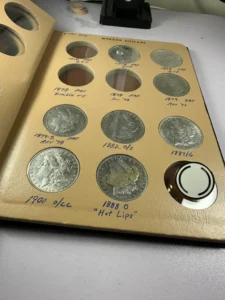Art speaks. But when paired with the right story, it doesn’t just speak—it moves. Whether you’re an artist, collector, gallery owner, or just passionate about the creative world, storytelling is one of the most powerful tools you can use to connect, inspire, and sell.
Let’s walk through why stories matter in art and collection marketing and how you can use them to build deeper emotional connections that go far beyond aesthetics or price tags.
Why Storytelling Matters in the Art World
You’ve probably heard it before: people don’t just buy products, they buy stories. This couldn’t be truer in the world of art and collectibles.
Think about it:
- You see two paintings.
- One is beautiful, abstract, and well-framed.
- The other tells a story about a mother’s resilience during wartime, painted by her son.
Which one are you more likely to remember? Which one pulls at your heart?
Stories add context. They give meaning. They make people care.
And when people care, they engage—they share, they buy, and they become part of that story themselves.
The Psychology Behind It
Humans are wired for stories. We’ve passed down knowledge, culture, and identity through storytelling for thousands of years. In fact, neuroscience backs this up:
- Stories trigger emotional responses. Emotional experiences are more memorable than rational ones.
- They release dopamine. When we hear a powerful story, our brain rewards us with feel-good chemicals.
- We empathize more. Hearing a story helps us step into someone else’s shoes.
In marketing, this means a story can make a buyer feel something real—a sense of connection to the artist, a shared struggle, or a meaningful idea that aligns with their values.
What Makes a Good Story in Art Marketing?
A good story doesn’t have to be dramatic or long. But it does need to be:
- Authentic: Share your real experiences, thoughts, or inspiration. People spot fake stories from a mile away.
- Emotional: It could make people laugh, cry, smile, or remember something important.
- Simple: Don’t complicate it. The story should be easy to understand and repeat.
- Relevant: It should connect to the art or item you’re presenting.
Real-Life Examples of Storytelling in Art Sales
1. The Artist Who Painted Through Grief
An artist in Brooklyn painted a series after losing her father. Her collection included handwritten letters between them woven into each canvas. Buyers didn’t just see paint; they saw love, loss, and healing. That story sold out the entire series.
2. Vintage Watch With a War Hero’s Tale
A vintage Omega wasn’t selling well. Then the collector revealed that it once belonged to a WWII pilot. Suddenly, buyers saw history, bravery, and legacy, not just a timepiece.
3. Handmade Ceramics Inspired by Family Traditions
A potter started sharing stories about how his grandmother taught him to mold clay as a child. Each piece was linked to a family memory. That human element transformed simple kitchenware into generational art.
How to Craft Your Own Story
Ready to turn your work or collection into something people feel connected to?
Start here:
1. Start With the Why
Why did you make or collect this piece? What inspired it? What do you want others to feel?
Example: “I painted this after moving across the country alone. Each brushstroke helped me process that change.”
2. Share the Journey
Tell us about the process. Did you face any challenges? Was there a breakthrough moment?
Example: “This sculpture took five months. I nearly gave up halfway through. Then my son said, ‘Dad, it already looks amazing.’ That pushed me to finish.”
3. Make It Personal
Details matter. Use names, dates, places—the things that ground your story in reality.
Example: “The fabric came from a small market in Lagos, where my aunt used to take me on Sundays.”
4. Connect to the Audience
What part of your story might others relate to? Loneliness? Hope? Pride? Ask yourself, “How does this make them feel?”
5. Don’t Just Tell—Show
Use photos, sketches, or short videos. Let people see the emotion behind the work.
Where to Use Storytelling in Art Marketing
Once you have your story, it should go everywhere your art or collectibles live.
- Website Product Descriptions: Write more than just size and medium. Add a story.
- Social Media Captions: Use short versions of your story in posts.
- Exhibition Labels: Include a few sentences about inspiration or background.
- Email Newsletters: Share behind-the-scenes journeys.
- Press Releases: Journalists love a good human-interest angle.
Storytelling for Collectors and Dealers
Collectors and dealers aren’t left out. Every item you own or sell likely has a backstory. Even if it doesn’t, you can build one through research and context.
- Talk about where you found it (“Tucked in a dusty store in rural Arizona…”).
- Mention the maker (“Created by a 19-year-old rebel artist in 1972…”).
- Share its impact (“Hung in a jazz club for 20 years before I found it…”).
Your storytelling turns objects into experiences.
The Impact: Value Beyond Price
Let’s be honest: a good story can raise the price tag. But more importantly, it raises perceived value.
People are willing to pay more when they feel connected. And they’re more likely to become repeat buyers, collectors, and fans.
When someone buys a painting that tells the story of motherhood, they’re buying a piece of their identity, too.
Common Mistakes to Avoid
- Over-explaining: Let people fill in some blanks.
- Making it all about you: Instead, tie your story to universal themes.
- Forcing drama: You don’t need a tragic backstory. Simplicity works.
- Neglecting visuals: A great photo of your workspace or process tells its own tale.
Your Story Is Your Signature
In a world overflowing with digital content and mass production, stories are how we stand out. They’re how we make strangers care. They turn browsers into believers.
Your art or collection doesn’t need to shout to be seen. It just needs a story that feels real.
Make Them Feel Something
At the end of the day, storytelling is about emotion. People forget specs, prices, and features. But they remember how something made them feel.
So tell your story. Not just to sell, but to connect.
Because art is personal, and when someone buys your piece or item, they’re not just buying the object.
They’re buying the meaning behind it.






